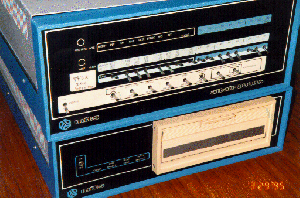DEFINITION OF ETHICS
In general, ethics is a moral philosophy where a person makes a specific moral choice and sticks to it. On the other hand, ethics in computing means moral guidelines to refer to when using the computer and computer networks. This includes the Internet.
DEFINITION OF LAW
Law is a legal system comprising of rules and principles that govern the affairs of a community and controlled by a political authority.
Law differs from one country to another. In the era of technology, computer law is needed to clarify goods or actions that fall under the computer law. Computer law refers to all areas in law that requires an understanding of computer technology such as hardware, software and Internet.
Examples of laws of computing in Malaysia include the Malaysian Communication and Multimedia Act, the Computer Crime Act 1997 and the Telemedicine Act 1997.
1.2.1.3 State the need for intellectual property laws
WHY DO WE NEED ETHICS AND LAW IN COMPUTING?
• Respecting Ownership
• Respecting Privacy
• Respecting Property
RESPECTING OWNERSHIP
We must respect ownership by not stealing other people’s work either by duplicating or distributing it. Duplicating and distributing copies of audio
tapes, video tapes and computer programs without permission and authorisation from the individual or company that created the program
are immoral and illegal.
RESPECTING PRIVACY AND CONFIDENTIALITY
We should respect other people's privacy and confidentiality by refraining ourselves from reading their mails or files without their permission. If we do so, it is considered as violating an individual’s rights to privacy and confidentiality.
RESPECTING PROPERTY
Property here means ownership. Since an individual data and information are considered as property, therefore, an act of tampering and changing electronic information is considered as vandalism and disrespect for other people’s property.
SIMILARITIES BETWEEN ETHICS AND LAW
Both ethics and law are complimentary to each other and are made:
• to guide user from misusing computers
• to create a healthy computer society, so that computers are used to
contribute to a better life
• to prevent any crime
DIFFERENCES BETWEEN ETHICS AND LAWS
ETHICS
GUIDELINE As a guideline to computer users.
MORAL STANDARDS Ethical behaviour is judged by moral standards.
FREE TO FOLLOW Computer users are free to follow or ignore the code of ethics.
NO PUNISHMENTS No punishment for anyone who violates ethics.
UNIVERSALS Universal, can be applied anywhere, all over the world.
PRODUCE ETHICAL
COMPUTER USERS To produce ethical computer users.
IMMORAL Not honouring computer ethics means ignoring the moral elements
(immoral).
LAW
CONTROL As a rule to control computer users.
JUDICIAL STANDARDS Law is judged by judicial standards.
MUST FOLLOW Computer users must follow the regulations and law.
PENALTIES, IMPRISONMENTS
AND OTHER PUNISHMENTS Penalties, imprisonments and other punishments for those
who break the law.
DEPENDS ON COUNTRY Depends on country and state where the crime is
committed.
PREVENT MISUSING OF
COMPUTERS To prevent misuse of computers.
CRIME Not honouring the law means committing a crime.
UNETHICAL VS. LAW BREAKING CONDUCTS
Unethical:
• using the office computer to do personal things
• reading your friend’s e-mail without his or her permission
• plagiarising and using materials from the Internet for your class assignment without giving credit to the original author.
Law breaking:
• sending a computer virus via e-mail
• hacking into your school’s database to change your examination results.
• selling pirated software in a night market
INTELLECTUAL PROPERTY RIGHTS
DEFINITION OF INTELLECTUAL PROPERTY
Intellectual Property refers to works created by inventors, authors and artists. These works are unique and have value in the market place. In our daily lives, we are surrounded by things that are protected by IP. Your school bags, your shoes and even your socks are protected by Intellectual Property rights. Nike, Bata or Adidas, for example, are all protected by a group of legal rights.
INTELLECTUAL PROPERTY LAW
Intellectual Property laws cover ideas, inventions, literary creations, unique names, business models, industrial processes, computer program codes and more.
INVENTIONS PROTECTED BY INTELLECTUAL PROPERTY LAWS
As businesses continue to expand globally, business owners must realise the importance of getting professional advice on how to establish and safeguard their intellectual property rights. These include :
• Trademarks
• Service marks
• Trade/company names
• Domain names
• Geographical indications
• Copyrights
• Patents
INTELLECTUAL PROPERTY PROTECTION
There are four types of Intellectual Property protection. They are patents for invention, trademarks for brand identity, designs for product appearance and copyright for material.
• Patents for inventions
• Trademarks for brand identity
• Design for product appearance
• Copyright for material
Patents for inventions
Utility, design or plant patents that protect inventions and improvements to
existing inventions
Trademarks for brand identity
Words, names, symbols, devices and images that represent products, goods or services.
Design for product appearance
Literary and artistic material, music, films, sound recordings and roadcasts,
including software and multimedia.
Copyright for material
The features of, in particular,the lines, contours, colours,shape, texture or material of the product itself or its ornamentation.









